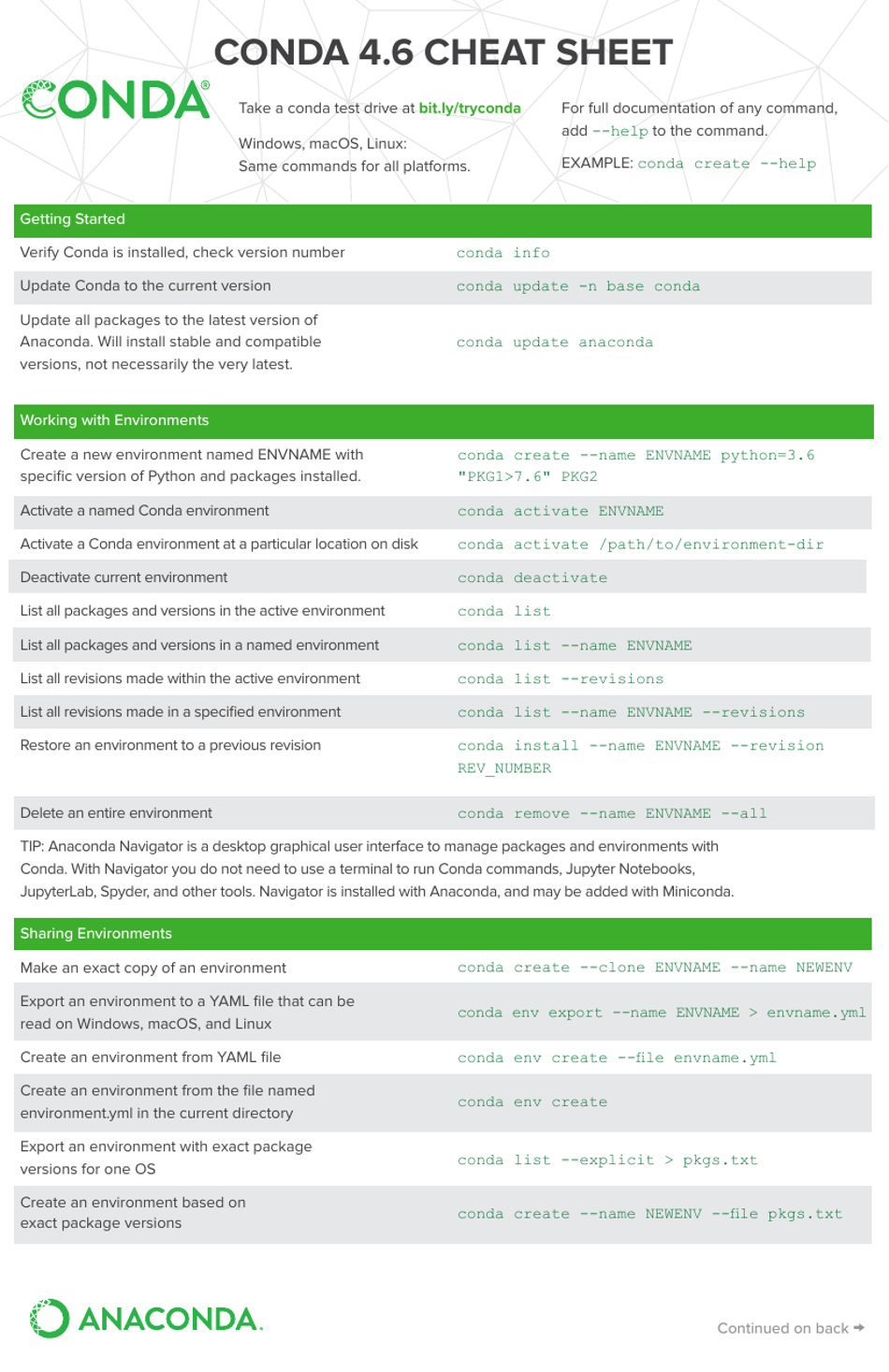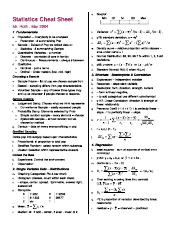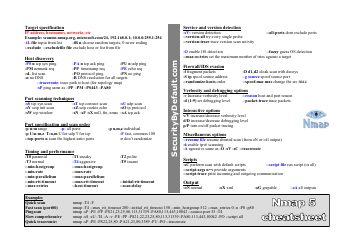Conda 4.6 Cheat Sheet
The Conda 4.6 Cheat Sheet is a helpful resource that provides quick and concise information about using Conda, a popular package management system used in data science and scientific computing. It offers shortcuts, commands, and tips for working with Conda efficiently.
FAQ
Q: What is Conda?
A: Conda is an open-source package management system and environment management system that runs on Windows, macOS, and Linux.
Q: What is the latest version of Conda?
A: As of the time of this document, the latest version of Conda is 4.6.
Q: What is a package in Conda?
A: A package in Conda is a binary distribution of software, including libraries, executables, and metadata, that is designed to be installed on a specific operating system.
Q: What is an environment in Conda?
A: An environment in Conda is a directory that contains a specific collection of packages and their dependencies, allowing multiple versions of the same software to coexist on your system.
Q: How do I create a new environment in Conda?
A: You can create a new environment in Conda by using the 'conda create' command followed by the desired name of the environment and the packages you want to include.
Q: How do I activate an environment in Conda?
A: You can activate an environment in Conda by using the 'conda activate' command followed by the name of the environment.
Q: How do I install a package in Conda?
A: You can install a package in Conda by using the 'conda install' command followed by the name of the package.
Q: How do I update Conda?
A: You can update Conda by using the 'conda update conda' command.
Q: How do I update all packages in my environment?
A: You can update all packages in your environment by using the 'conda update --all' command.
Q: How do I remove a package in Conda?
A: You can remove a package in Conda by using the 'conda remove' command followed by the name of the package.
Q: How do I list all the environments in Conda?
A: You can list all the environments in Conda by using the 'conda info --envs' command.
Q: How do I list all the packages in my environment?
A: You can list all the packages in your environment by using the 'conda list' command.
























